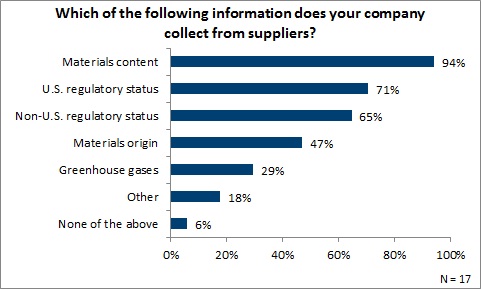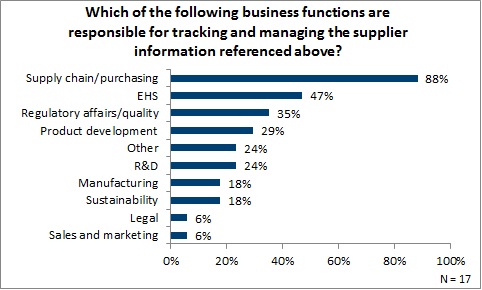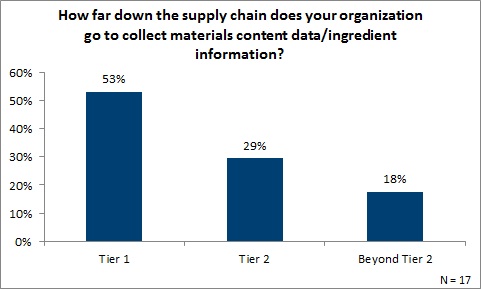What are global manufacturers doing to ensure that they achieve compliance with global regulations? APQC recently conducted a survey of organizations on the responsibilities associated with implementing product stewardship programs. The survey yielded some interesting results with regard to supply chain visibility.
The majority of the responding organizations collect information on materials content from their suppliers. However, less than half of the organizations surveyed collect data from their suppliers regarding the origin of materials. With increased pressure on companies to know where their purchased materials come from, the survey results reveal that organizations have room for improvement with regard to supply chain visibility.

Not surprisingly, most of the organizations surveyed rely on the supply chain function to collect and manage information from suppliers. Nearly half of the responding organizations also rely on their environmental health and safety programs to track and maintain supplier data that is used to ensure compliance with regulations.

Another telling result is that few of the responding organizations track information beyond their first tier of suppliers. Only 29 percent of the organizations track information for Tier 2 of their supply chains (their suppliers’ suppliers). To keep up with increasingly broad regulations on the content and origin of materials in products (especially for the electronics industry), organizations must make concerted efforts to obtain greater supply chain visibility.

So what are organizations doing to increase visibility? APQC recently profiled ATMI, a provider of technologies for the semiconductor, life science, and flat panel display industries that has created an alert system using information from multiple tiers of suppliers. The alert system tracks the components of ATMI’s top revenue-generating products down to the base elements, providing the company with a clear picture of where the components come from and what the components contain. The bonus of the visibility achieved by ATMI is that, should a natural disaster occur, the company can quickly know if any of its suppliers (or suppliers’ suppliers) have been affected. This in turn enables ATMI to quickly find alternative sources of materials if necessary.
The results of APQC’s recent survey on product stewardship indicates that organizations are taking product compliance and supply chain visibility seriously, but that there is still progress to be made. Close relationships with suppliers and innovative solutions, like that implemented by ATMI, will be needed for companies to have increased visibility into their supply chains.
APQC members can access the full Product Stewardship and Product Compliance Survey Summary Report here. APQC members and nonmembers can access an article on ATMI’s alert system here.